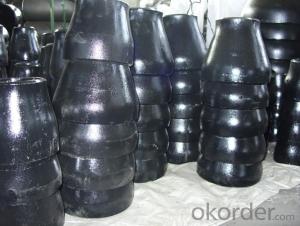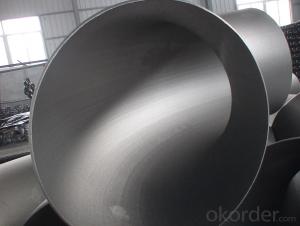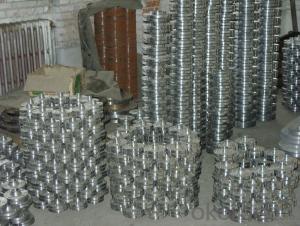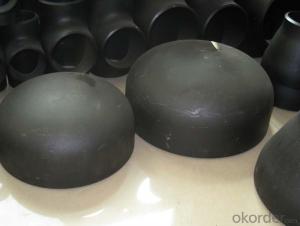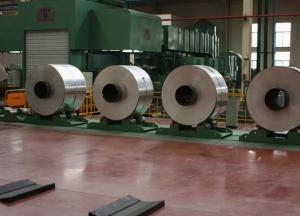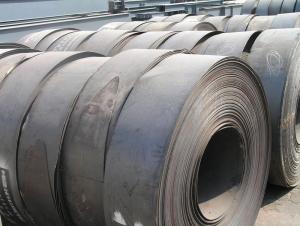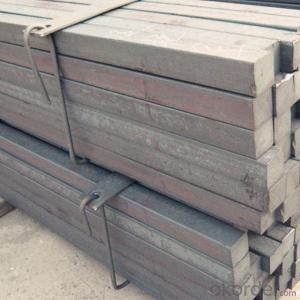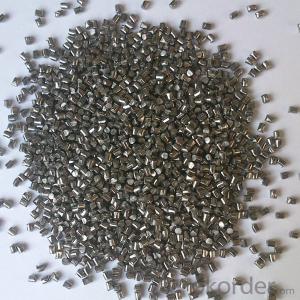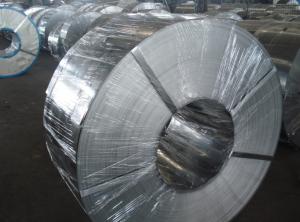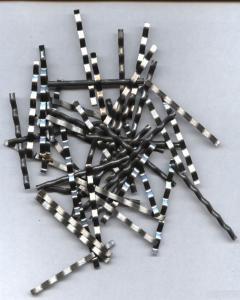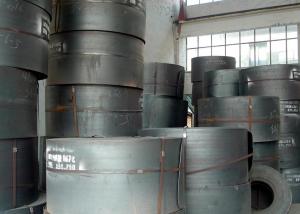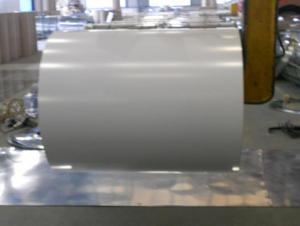Carbon Steel Pipe Fittings SA105
- Loading Port:
- China Main Port
- Payment Terms:
- TT OR LC
- Min Order Qty:
- -
- Supply Capability:
- -
OKorder Service Pledge
OKorder Financial Service
You Might Also Like
Specifications
pipe fitting elbow
Certificate:ISO:9001-2000
New material,completely meet asme and din standard
Best price
1. type: AISI ASTM A234 WPB BW Con Elbow
2. Size: 1/2"-48"(1/2"-24"is seamless and 26"-48"is welded)
3. Wall thickness: sch10-160, STD, XS, XXS
4. Material: A234WPB, A420WPL6, A420WP5, WP11, WP12, WP22, etc
5. Welding line: seamless
6. Angle of bend: 30, 45, 90, 180degree
7. Bending radius: SR, LR
8. Standard: ANSI B16.9, JIS, SB, DIN, GB
9. Surface treatment: black paint, vanis paint, black rust-proof oil,
transparent oil, hot galvanizing
10. Application: petroleum, electricity, chemical, natural gas, metallurgy,construction,
shipbuilding and other fields because of its high pressure, high temperature, etc
11. connection: welding
12. technics:forged
13.Certificate:ISO9001 - 2000, CE, SGS, etc.
14. packaging: wooden case, pallet, container or in accordance with the
requirement of customers
15. Principle: quality fist, customer first, credit first
16. payment: L/C T/T
17. delivery time: 7-25 days after payments
18. Notes: the bevel can be made in accordance with the special requirements
of the customers
19. Others: we can also produce the products according to the requirements
of the customers
The main production:
1. PIPE FITTINGS: elbows, tees, bends, reducers, cap, flanges and sockets etc.
2. PIPE: bult welded pipes, seamless pipes, threaded pipes, etc.
We sincerely welcom customers at home and abroad to visit us and seek common development.
- Q:What is the difference between hot rolled and cold rolled steel?
- The main difference between hot rolled and cold rolled steel lies in the manufacturing process. Hot rolled steel is produced at extremely high temperatures, which results in a rougher surface finish and less precise dimensions. Cold rolled steel, on the other hand, is processed at lower temperatures, allowing for a smoother surface finish and tighter tolerances. Additionally, hot rolled steel tends to be more malleable and ductile, while cold rolled steel is generally stronger and harder.
- Q:How is steel used in the production of fire-resistant materials?
- Steel is often used as a reinforcing material in the production of fire-resistant materials. It is used to strengthen and support structures, such as fire doors, fireproof walls, and fire-resistant coatings. Steel's high melting point and durability make it an ideal choice to enhance the fire resistance of these materials, providing added protection against heat and flames.
- Q:What are the different types of steel scaffolding and support systems available?
- There are several types of steel scaffolding and support systems available, including traditional tube and clamp scaffolding, system scaffolding, frame scaffolding, and mobile scaffolding. Each type has its own advantages and is suited for different applications. Traditional tube and clamp scaffolding is versatile and can be customized to fit any structure, while system scaffolding offers pre-designed components for faster assembly. Frame scaffolding is commonly used in construction projects, and mobile scaffolding is portable and ideal for smaller tasks or maintenance work.
- Q:What are the safety regulations and standards for steel product manufacturing?
- The safety regulations and standards for steel product manufacturing vary depending on the country and industry. However, common safety guidelines include proper handling and storage of raw materials, the use of personal protective equipment (PPE) by workers, implementation of proper ventilation systems to control airborne contaminants, regular equipment maintenance and inspections, adherence to machine guarding protocols, and ensuring proper training and education for employees to minimize hazards and accidents. Additionally, steel manufacturers are often required to comply with specific industry standards such as ISO 9001 for quality management and ISO 14001 for environmental management.
- Q:What are the different types of steel sections used in industrial structures?
- There are several different types of steel sections commonly used in industrial structures including I-beams, H-beams, angles, channels, and tubes. These sections offer various shapes and sizes to provide the required strength, stability, and load-bearing capacity for different applications in industrial construction.
- Q:What are the different types of steel profiles used in architectural designs?
- There are several types of steel profiles commonly used in architectural designs, including I-beams, C-channels, angle iron, T-sections, and hollow structural sections (HSS). These profiles are utilized for their structural strength, versatility, and ability to support heavy loads in various architectural applications.
- Q:How is steel used in the manufacturing of mining equipment?
- Steel is used extensively in the manufacturing of mining equipment due to its exceptional strength, durability, and resistance to wear and tear. It is used to construct various components such as drill bits, crushers, conveyor belts, and ore processing machinery, ensuring the equipment can withstand the harsh conditions and heavy loads encountered during mining operations.
- Q:What are the advantages of using steel for construction purposes?
- There are several advantages of using steel for construction purposes. Firstly, steel is incredibly strong and durable, making it ideal for constructing buildings and structures that need to withstand heavy loads and harsh weather conditions. Secondly, steel is a highly versatile material that can be easily shaped and molded into various forms, allowing for creative and innovative designs in construction. Additionally, steel is fire-resistant, which enhances the safety of buildings and reduces the risk of damage and collapse in the event of a fire. Moreover, steel is a sustainable and environmentally-friendly choice, as it can be recycled and reused, minimizing waste and reducing the carbon footprint of construction projects. Overall, the use of steel in construction offers numerous benefits in terms of strength, versatility, safety, and sustainability.
- Q:What are the different types of steel bolts and their uses in automotive assembly?
- There are several types of steel bolts commonly used in automotive assembly. These include hex bolts, flange bolts, shoulder bolts, and carriage bolts. Hex bolts, also known as hex head bolts or cap screws, have a six-sided head and are used to fasten various components in the automotive assembly process. They are versatile and can be tightened or loosened using a wrench or socket. Flange bolts have a flange (a wider circular base) built into the head, which distributes the load and provides a larger surface area for better grip. These bolts are often used in applications where there is a need for high-strength and a secure connection. Shoulder bolts, also called shoulder screws or stripper bolts, have a cylindrical shoulder between the head and the threaded portion. They are commonly used in automotive assembly to secure rotating or sliding components, allowing for smooth movement while maintaining stability. Carriage bolts, also known as coach bolts, have a round, domed head and a square or ribbed neck beneath it. These bolts are primarily used in applications where the bolt head needs to be flush with the surface, providing a smooth and snag-free finish. Each type of steel bolt has its unique design and characteristics, making them suitable for specific automotive assembly tasks.
- Q:How do steel products contribute to the construction of zoos and wildlife sanctuaries?
- Steel products contribute to the construction of zoos and wildlife sanctuaries in various ways. Firstly, steel is a durable and strong material that is used to create the framework and support structures of zoo exhibits and enclosures, ensuring the safety and security of the animals. Additionally, steel is used in the construction of visitor facilities like walkways, observation decks, and viewing platforms, allowing visitors to safely observe and interact with the animals. Steel products also play a crucial role in the creation of gates, fences, and barriers, helping to keep the animals secure and prevent any unwanted interactions. Overall, steel products provide the necessary strength, stability, and versatility required for the construction of zoos and wildlife sanctuaries.
1. Manufacturer Overview |
|
|---|---|
| Location | |
| Year Established | |
| Annual Output Value | |
| Main Markets | |
| Company Certifications | |
2. Manufacturer Certificates |
|
|---|---|
| a) Certification Name | |
| Range | |
| Reference | |
| Validity Period | |
3. Manufacturer Capability |
|
|---|---|
| a)Trade Capacity | |
| Nearest Port | |
| Export Percentage | |
| No.of Employees in Trade Department | |
| Language Spoken: | |
| b)Factory Information | |
| Factory Size: | |
| No. of Production Lines | |
| Contract Manufacturing | |
| Product Price Range | |
Send your message to us
Carbon Steel Pipe Fittings SA105
- Loading Port:
- China Main Port
- Payment Terms:
- TT OR LC
- Min Order Qty:
- -
- Supply Capability:
- -
OKorder Service Pledge
OKorder Financial Service
Similar products
New products
Hot products
Related keywords
